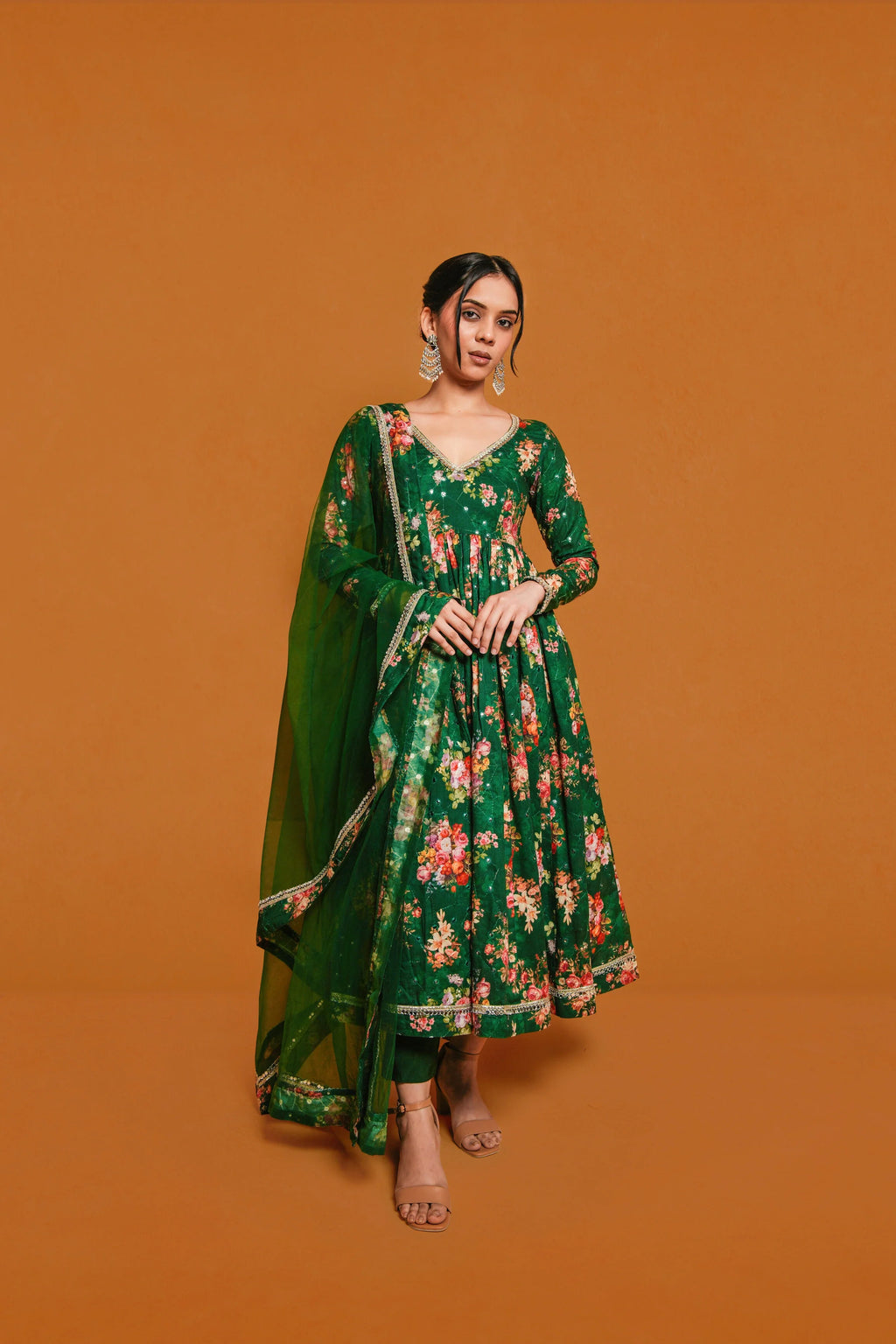Difference Between Sharara and Gharara: Style Guide

It is hard to analyze the difference between Sharara and Gharara. The two classic costumes are rather similar, yet they possess exclusive cuts, cultures, and manners of dressing. Sharara versus gharara differences are some of the elements that will guide you when you need the acumen to know which one to wear at a wedding or when you want to play festive dress-up.
Background and Cultural Origins
To understand the contrast between sharara and gharara, we should initially consider their origins:
-
The Mughal era led to the origin of the sharara, and it was the favorite among the royal female population.
-
The gharara originates in Awadh in India, and its Lucknowi Muslim culture ties heavily to it.
This cultural context gives significance to the distinction between sharara and gharara as well as the identity each of the outfits holds.
Stitching Technique and Structure
One major difference between sharara and gharara is how they are made. It affects not only how the outfit looks but also how it moves. This small design detail gives each piece its unique charm and identity.
-
Sharara pants are loose from the waist down without any joints.
-
Gharara pants are fitted below the knees and are later made wide with a visible bend. Often, lace or embroidery is deployed.
Such a stitching technique renders the sharara and gharara transparent in movement and look.
Visual Appearance and Fit
Another important difference between sharara and gharara lies in how they look when worn:
-
Sharara is light provides a skirt-like appearance and is flowy.
-
The shape of the gharara is more dramatic and structured and has knee-defining flares.
The visual difference makes the sharara and gharara differences apparent and enables you to choose according to the shape of your body and the style you follow.
Occasion-Based Selection
The sharara and gharara difference also extends to the kind of events suitable for the two:
-
Sharara will be good for parties, sangeets, or informal weddings.
-
The gharara is worn mostly at official functions and traditional occasions, preferably by the brides or their relatives.
Information about the difference between sharara and gharara can guide you to use the right attire at a given time.
Styling Recommendations
This is how each outfit could be stylized to make it beautiful:
-
You can wear a sharara with long Kurtis or Anarkali-style tops and look graceful.
-
Combine a pair ghararas with short kurtas or peplum tops in order to show the knee joints and flare.
Not only do these styling ideas make you appear good, but they also signify that nothing can be much different when it comes to sharara and gharara in day-to-day style.
Main Differences in Overview
This list can help you know the difference between the sharara and the gharara:
-
Cut and Fit: Sharara flows straight; gharara fits to knees and flares.
-
Joint: Sharara has no joint; gharara includes a knee joint.
-
Eye appeal: Sharara looks like a skirt; gharara has a tiered look.
-
Best Pairing: Sharara looks good with long tops; gharara fits better with tops that are not full-length.
This breakdown makes the contrast between sharara and gharara easier to understand and remember.
Modern Trends and Use
Even now, the distinction between gharara and sharara is quite relevant to contemporary ethnic fashion:
-
The sharara is still commonly worn in light material and Indo-Western designs.
-
The gharara is popular even today because of its lavish, wedding appearance and cultural beauty.
With the help of the difference between sharara and gharara, women may have a variety and stay traditional in a single wardrobe.
Final Thoughts
With all the mentioned information, it should be evident what the difference between a sharara and a gharara is. Both outfits are full of tradition and eternal elegance. As gharara is stiff, elegant, and carries much tradition, a sharara is free, airy, and contemporary. It is important to know about the key difference between sharara and gharara to wear them with dignity and flair.
FAQs
1. How does the major distinction between sharara and gharara differ?
The major contrast between sharara and gharara lies in the stitching: sharara is free-flow, whereas gharara is made to flare out at the knees with a joint.
2. What is the importance of the difference between the sharara and gharara when dressing up for the occasion?
The deal with the sharara and gharara difference will make you select the appropriate one according to the formality of the event and personal style.
3. Are you allowed to wear a sharara and a gharara with the same kind of top?
It is not always the case, though, because the distinction between sharara and gharara also involves styling: shararas fit only with longer kurtis, whereas ghararas only with shorter ones.
4. Is it the same thing with sharara and gharara; is it just different in design?
No, t differences between sharara and gharara also involve cultural origin, the occasion where they are worn, and how each outfit swings when worn.
5. What is the best way to memorize that sharara and gharara are different?
The difference between sharara and gharara can also be remembered with emphasis on the joined flare in ghararas and the smooth fall in shararas.


















